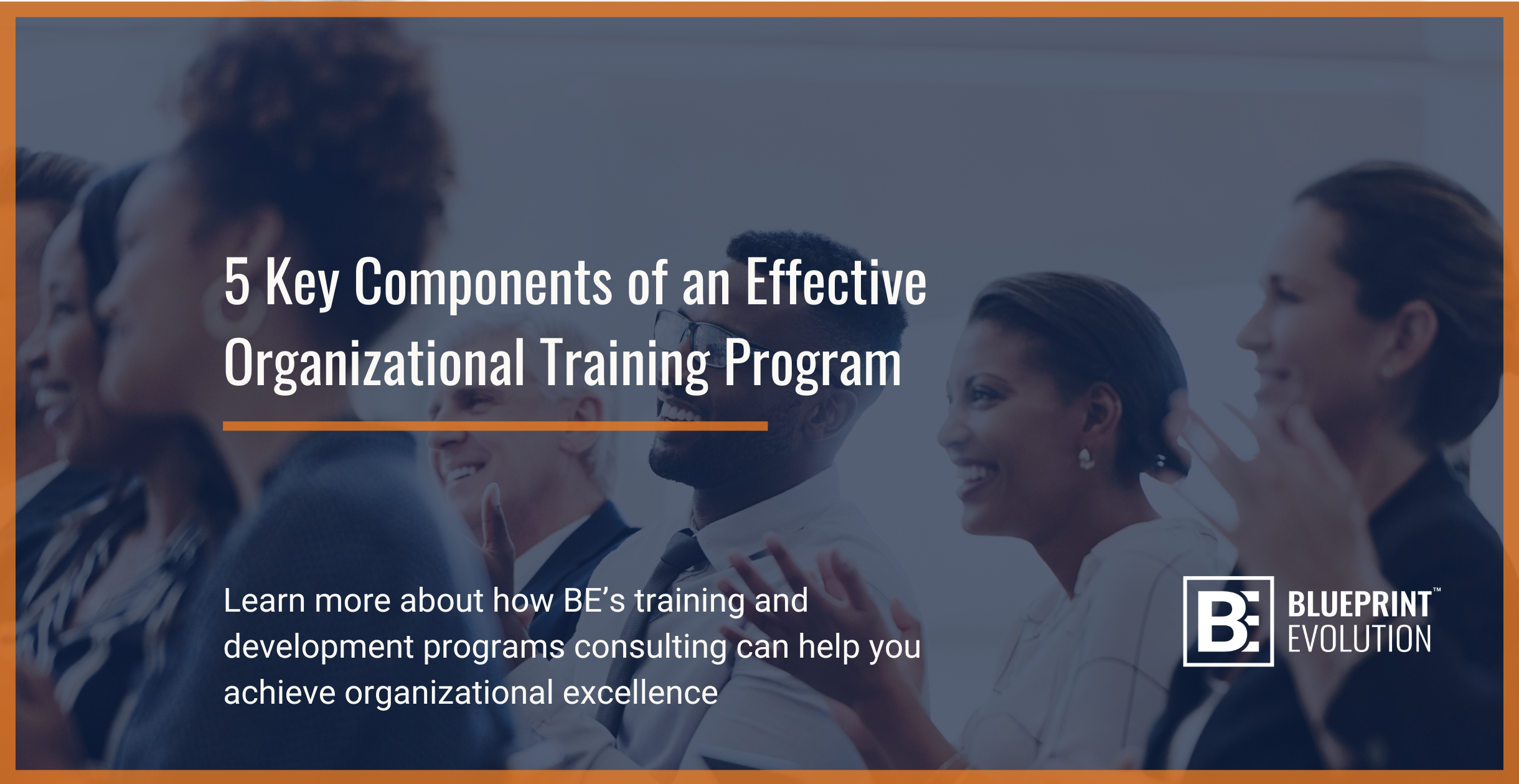Training and development programs are essential for organizations seeking to stay competitive. They enhance employee skills and align with organizational goals, fostering a culture of continuous improvement and innovation. However, the effectiveness of training and development programs depends on several critical factors.
Below, we explore the five key components that make training and development programs successful and provide tips for evaluating and selecting the right training partners.
Relevance to Organizational Goals and Employee Needs
An organizational training and development program must align with the organization’s strategic objectives while addressing employees’ specific needs. Without this alignment, training risks becoming a once-a-year box-checking exercise with minimal lasting impact.”
- Identify Organizational Objectives: Begin by understanding the broader goals of the company. For example, training might focus on decision-making, team communication, and conflict resolution if the goal is to strengthen leadership effectiveness.
- Assess Employee Needs: Conduct surveys, interviews, or performance evaluations to identify leadership skill gaps and areas for growth. Focused leadership development ensures participants gain practical, applicable strategies that enhance their effectiveness.
- Stay Industry-Specific: Customize leadership programs to the unique challenges of different leadership levels and industries. For example, emerging leaders may focus on foundational skills like decision-making and delegation, while senior leaders may emphasize strategic thinking and organizational influence.
Tip: Collaborate with department heads and emerging leaders to co-design leadership development programs that align with organizational goals, ensuring engagement and long-term impact.
Engaging and Interactive Learning Experiences
Engagement is essential for knowledge retention and real-world application. Passive, lecture-style training often fails to resonate, leading to limited impact.
- Incorporate Interactive Methods: Use hands-on activities like role-playing, simulations, and group discussions. For example, leadership training might include problem-solving exercises to mimic real-life challenges.
- Leverage Technology: Gamification, virtual reality, and AI-powered tools can create immersive learning experiences. Interactive modules with quizzes, badges, and scenario-based challenges can boost motivation and completion rates.
- Blend Formats: A combination of in-person workshops, virtual sessions, and self-paced e-learning increases accessibility and accommodates diverse learning styles.
Tip: Regularly collect feedback during and after training sessions to refine formats and maintain high engagement.
Well-Defined and Measurable Outcomes
The success of an organizational training and development program depends on clear goals and measurable outcomes.
- Set SMART Objectives: Training goals should be Specific, Measurable, Achievable, Relevant, and Time-bound. For example, A 25% improvement in employee feedback scores on leadership effectiveness within six months.
- Use KPIs to Measure Impact: Measure training effectiveness using Key Performance Indicators (KPIs) such as increased productivity, fewer errors, and higher employee satisfaction. These metrics provide concrete evidence of success and areas for improvement.
- Track Long-Term Benefits: Beyond immediate results, track long-term impacts like leadership promotions, employee retention, and the return on investment (ROI) of training programs to ensure sustained growth and effectiveness.
Tip: Training success should be measured using pre-and post-training assessments, performance reviews, and long-term tracking of key business metrics.
Scalability and Flexibility
An organization’s training and development program should continuously adapt to the evolving needs of both the organization and its employees.
- Design Modular Content: Break training into standalone modules that can be updated independently. This ensures the program remains relevant as industry trends evolve.
- Offer Customization Options: Allow departments and teams to tailor training to their specific challenges. While a universal onboarding program is crucial, a sales team may benefit from specialized negotiation training.
- Emphasize Continuous Learning: Establish a culture of ongoing development rather than relying on one-time training. Provide accessible resources such as webinars, online courses, and mentorship programs.
Tip: Partner with a training provider experienced in scaling programs effectively across departments and locations.
Strong Support and Evaluation Mechanisms
Comprehensive support before, during, and after training ensures employees can effectively apply what they’ve learned and sustain their growth.
- Provide Pre-Training Preparation: Equip participants with materials to familiarize themselves with key concepts. For instance, sharing case studies or videos beforehand can enhance in-session participation.
- Foster Post-Training Reinforcement: Offer opportunities to apply new skills through hands-on projects, job shadowing, mentoring, or cross-functional assignments. Follow-up sessions, coaching, and refresher courses help embed learning into daily work routines.
- Evaluate and Improve: Regularly assess the program’s effectiveness through employee feedback, performance metrics, and key organizational outcomes. Use this data to refine training content, methods, and delivery.
Tip: Partner with providers who offer comprehensive evaluation tools, robust frameworks, and post-training support to maximize the program’s value.
6 Tips for Selecting the Right Training Partner
Choosing the right training partner is crucial to the success of your organization’s training and development program. Here’s what to consider:
- Industry Expertise: Look for providers with experience in your industry to ensure training content is relevant and actionable.
- Customization Options: Select a partner to tailor programs to your company’s goals, challenges, and organizational culture.
- Proven Results: To evaluate their impact, ask for case studies, client testimonials, and data-backed success metrics.
- Scalable Solutions: Ensure the provider can support organizational growth and adapt to evolving business needs.
- Innovative Approaches: Evaluate their use of technology and modern training methods, such as adult learning techniques, virtual reality, gamification, or AI-powered learning platforms, to enhance engagement and retention.
- Support Services: Check if they offer pre- and post-training support to enhance the learning journey.
Tip: Schedule a pilot session to assess the provider’s approach, engagement levels, and alignment with your organization’s goals.
An effective organizational training and development program is a strategic investment that drives organizational success. Companies can empower their workforce and achieve sustainable growth by focusing on relevance, engagement, measurable outcomes, scalability, and strong support mechanisms. Selecting the right training partner further amplifies these benefits, ensuring a seamless and impactful learning experience.
Whether you’re looking to upskill your team, address skill gaps, or prepare for industry changes, these five components serve as a blueprint for creating training programs that deliver lasting value. Prioritize these elements, and watch as your organization thrives in an ever-competitive landscape.








Wonderful article! We are linking to this great article on our site.
Keep up the good writing.